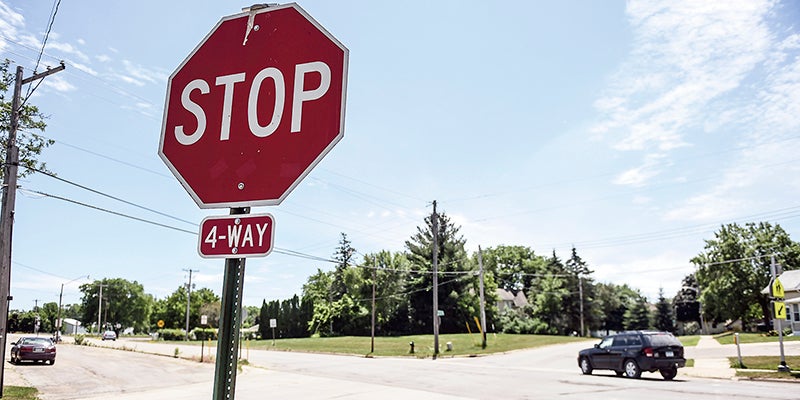UPDATE: Trump seeks breakthrough in Minnesota; Omar wins 2nd term
Published 10:26 am Tuesday, November 3, 2020
|
Getting your Trinity Audio player ready...
|
MINNEAPOLIS (AP) — Voting went mostly smoothly in Minnesota on Tuesday as the state’s residents finally made their choice in a high-stakes presidential race, with President Donald Trump hoping to buck history by becoming the first Republican to carry the state since Richard Nixon in 1972 — and Democrat Joe Biden banking on the state holding to its usual path.
Democratic U.S. Sen. Tina Smith was in a tough fight to keep her seat against challenger Jason Lewis, and three of the state’s eight House seats were seen as close. Also on the ballot: the potential for Democrats to capture full control of state government by taking the Senate.
A record number of Minnesotans voted early to avoid potential long lines on Election Day and the threat of the coronavirus. The state told voters it would count absentee ballots that came in up to one week beyond Election Day as long as they were postmarked by Tuesday. But a court ruling last week requiring that those ballots be segregated cast doubt on whether late-arriving votes would count.
At midday Tuesday, the state reported that some 283,000 requested absentee ballots hadn’t yet been returned.
A look at races in play in Minnesota:
PRESIDENT
Rarely has Minnesota received so much attention in a presidential race. Trump set a goal of winning the state after coming within 1.5 points in 2016. Trump came back to the state for several rallies in greater Minnesota cities in hopes of firing up his base enough to put him over the top this time.
Biden campaigned in Minnesota twice this fall, a visit to Duluth on the same day that Trump rallied in Bemidji and an event in St. Paul on Friday just before Trump visited Rochester. The dueling visits highlighted how Minnesota has been in play this cycle. Republican strength has been growing in recent years across much of rural Minnesota and on the once reliably Democratic Iron Range.
SENATE
Democratic U.S. Sen. Tina Smith faced voters for the second time in as many years after winning a special election in 2018 to fill out the term of U.S. Sen. Al Franken. She worked to build an image as a workhorse who reaches across party lines.
Republicans put up former U.S. Rep. Jason Lewis, who was well known from his days as a conservative talk radio host and a single term in the House. He stressed his support for Trump, including their shared opposition to pandemic restrictions and a common message that they would be better for “law and order” than Democrats. Trump rewarded Lewis’ loyalty with public praise.
HOUSE
Democratic U.S. Rep. Collin Peterson, a national figure as chairman of the House Agriculture Committee, asked voters in western Minnesota’s 7th District to send him back to Washington for a 16th term. He faced his most serious challenge in decades, from Republican former state Sen. Michelle Fischbach, in one of the GOP’s best pickup opportunities across the country.
There’s also a close race in southern Minnesota’s 1st District, where freshman GOP Rep. Jim Hagedorn is trying to fight off Democratic Iraq war vet Dan Feehan in a bitter rematch of their close 2018 race. And Minnesota’s 2nd District race, for the seat representing southern suburbs, was scrambled by the death of a third-party candidate. Democratic Rep. Angie Craig went to court to block having the election delayed until February, which might have put her at a turnout disadvantage against Republican and former Marine Tyler Kistner.
Democratic U.S. Rep. Ilhan Omar, a favorite target of Trump’s ire, easily defeated well-funded GOP challenger Lacy Johnson in the district that includes Minneapolis, while Democratic Rep. Dean Phillips defeated Republican Kendall Qualls in a western suburban district.
LEGISLATURE
All 201 legislative seats are up for election this year, and the GOP is defending a three-vote majority in the Senate. If Democrats take the Senate and keep their comfortable House majority, they’ll control how Minnesota deals with a projected $4.7 billion budget deficit and the redrawing of state and congressional district maps. The redistricting stakes are high. Minnesota is on the bubble for losing a congressional seat after new census figures come out.
SUPREME COURT
Associate Justice Paul Thissen, a former speaker of the Minnesota House, is facing voters for the first time since his appointment in 2018. Challenging him is Michelle MacDonald, a controversial family law attorney who is making her fourth bid for a seat on a court and is facing potential disciplinary sanctions for a second time.
VOTER VOICES
Marty Boeckman, 57, a software engineer from the Minneapolis suburb of Blaine who described himself as “very conservative,” said Tuesday that he voted for Biden “based on integrity. Integrity is what’s driving it all.” Trump, Boeckman said, “is just not what I want from a leader.” He said Biden is better equipped to deal with the pandemic.
“Trump’s in denial. … There needs to be a middle-ground approach” between doing nothing and complete lockdowns, he said.
At the same Blaine polling place, 45-year-old Greg Janacek said he voted for Trump.
“The biggest issue for me would be law and order,” Janacek said. “And keeping the economy strong.” He said he was concerned about law and order because of unrest and other events that followed the death of George Floyd in Minneapolis, “and the ones that could unfold.” He also said he thought Trump would be more able to deal with the pandemic going forward.
“I think it’s a good balance of staying open but still protecting our citizens,” he said.




